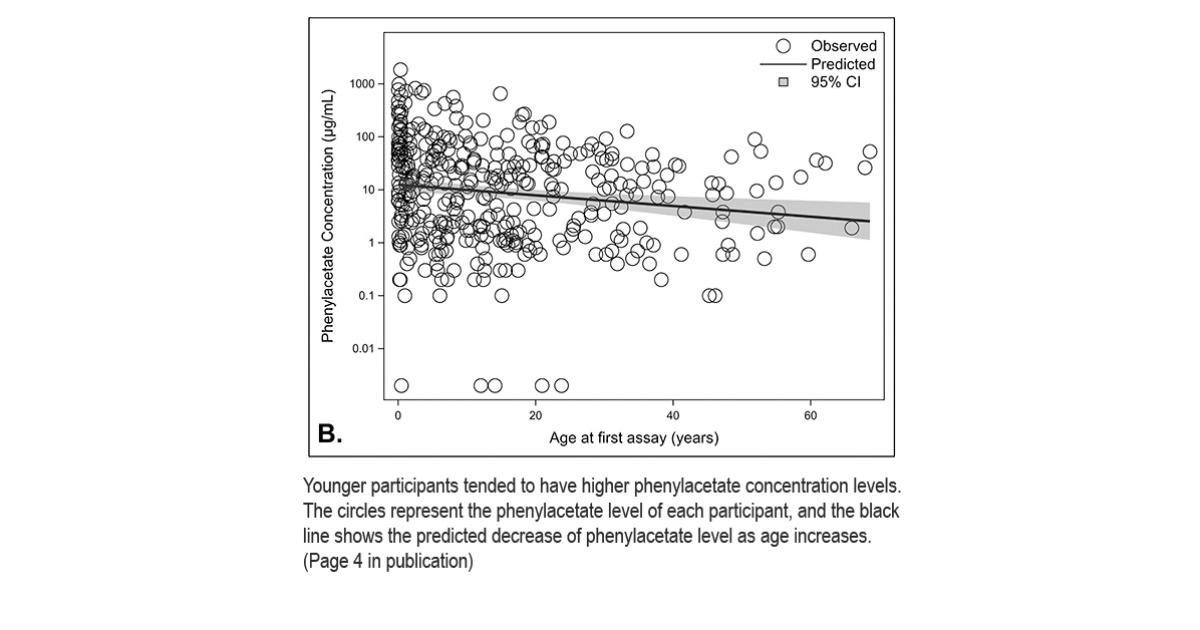Glinton KE, Minard CG, Liu N, Sun Q, Elsea SH, Burrage LC, Nagamani SCS. Monitoring the treatment of urea cycle disorders using phenylbutyrate metabolite analyses: Still many lessons to learn. Mol Genet Metab. 2023 Nov;140(3):107699. Epub 2023 Sep 11. PMID: 37717413.
Testing phenylbutyrate metabolites in blood can help physicians understand as to how the medications are being processed by the body. This can be of help in the management of urea cycle disorders (UCDs). This study found that younger patients and those on higher phenylbutyrate doses may need closer monitoring to prevent medication-related adverse events. While ammonia and amino acid levels remain the most important metabolic measurements that should be used for monitoring treatment, phenylbutyrate metabolite testing adds valuable insights into treatment safety and effectiveness.
Key Takeaways:
- Metabolites are substances made when the body breaks down a medicine or food. Metabolites are small molecules, such as amino acids, lipids, peptides, nucleic acids, carbohydrates, vitamins, and minerals.
- Phenylbutyrate-based medications (for example, Ravicti, Buphenyl, and Pheburane) are nitrogen scavenging medications that are used to treat people with UCDs.
- Testing metabolites from phenylbutyrate in blood in people with UCDs may help determine whether at the prescribed doses of phenylbutyrate-based medications, the nitrogen scavenger therapy is working and safe.
- One metabolite called phenylacetic acid (PAA) which can be toxic when elevated is of particular importance.
- The study found that there was a relationship between age and dose of phenylbutyrate medications with PAA levels. Patients who are younger and individuals who receive higher doses should be watched closely because they may be more prone to have higher levels of PAA.
This study looked at how testing phenylbutyrate metabolites can help treat people with urea cycle disorders (UCDs). UCD treatment usually involves a special diet and medicines like sodium benzoate, sodium phenylbutyrate, and glycerol phenylbutyrate to remove extra nitrogen from the body. A metabolite is a substance made when the body breaks down medicine or food. Recently, testing phenylbutyrate metabolites has been used to check if treatments are working and if they are safe. These tests can help find people with abnormal metabolite levels, making it easier to make changes to the medication doses.
• Age and Phenylacetate Levels: Younger patients tended to have had higher levels of PAA than older patients. This shows that younger patients may need more careful monitoring because their bodies process the medicine differently. • Doses and Metabolite Levels: Patients taking higher doses of phenylbutyrate-based medications had much higher levels of PAA. This means people on higher doses need to be monitored more closely.
• Same Results for Different UCD Types: The study found no big differences in metabolite levels for different types of UCDs. Testing phenylbutyrate metabolites is becoming a helpful tool for treating UCDs. Doctors still focus on ammonia and amino acid levels, but these tests give more information about how safe and effective the treatment is. The study also says more research is needed because some data was missing.


